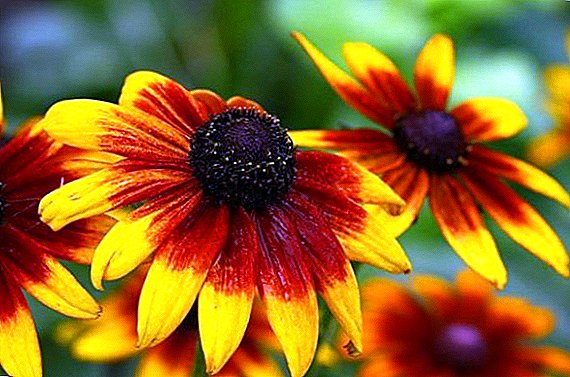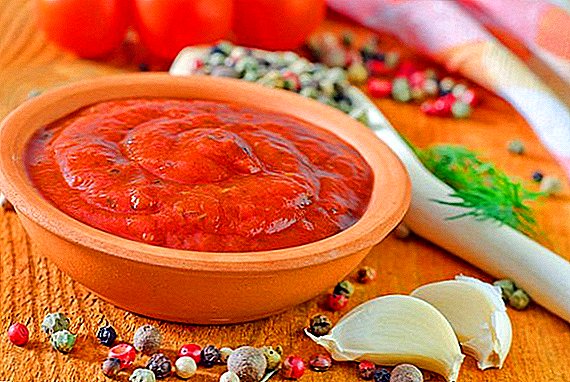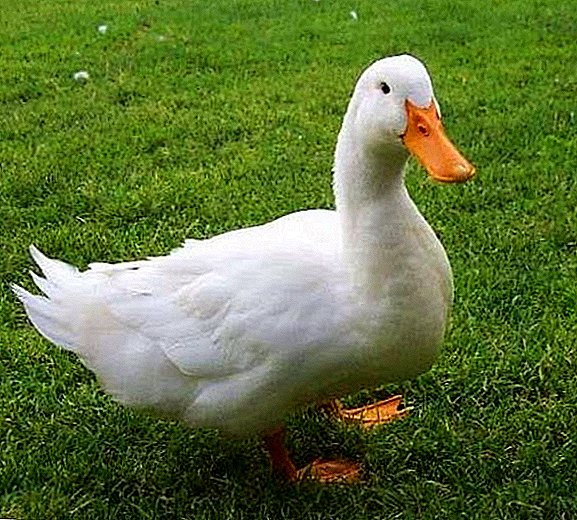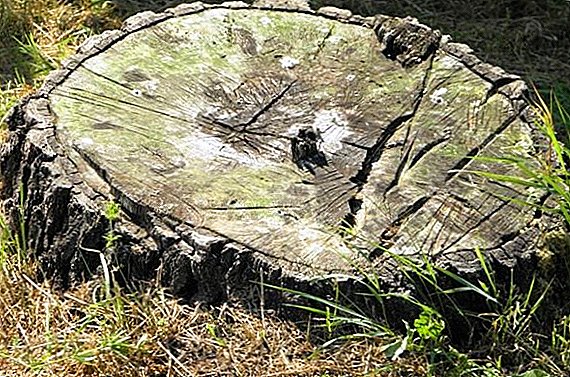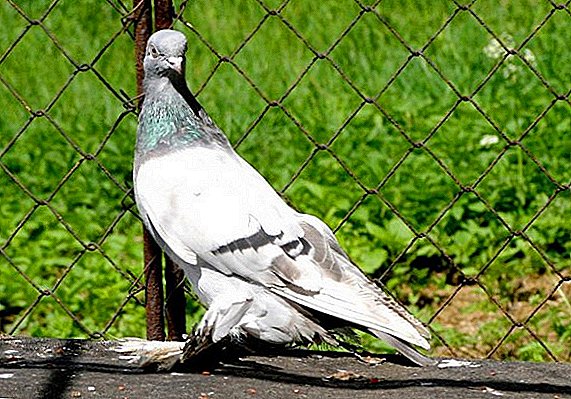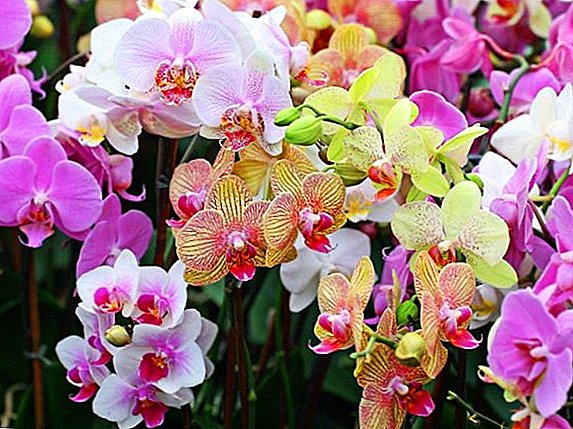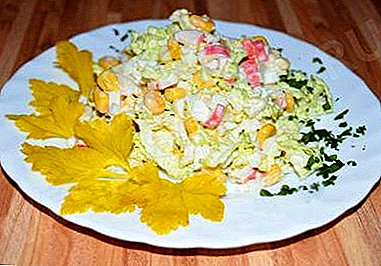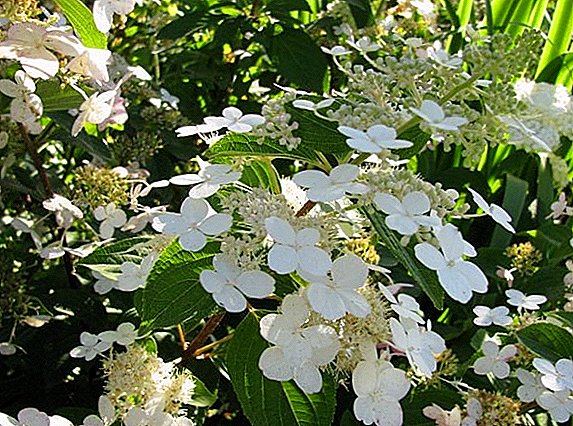 The stem hydrangea is able to decorate the garden of any gardener, as it is a unique woven type of shrub. Its smell is easily confused with the smell of honey. And she is able to grow in harsh conditions. In this article we will analyze in detail how to properly care for this plant.
The stem hydrangea is able to decorate the garden of any gardener, as it is a unique woven type of shrub. Its smell is easily confused with the smell of honey. And she is able to grow in harsh conditions. In this article we will analyze in detail how to properly care for this plant.
Botanical description of stalked hydrangeas
A variety of garden hydrangea that does not have a solid trunk is a pedal hydrangea. This plant is not a shrub in its structure, but rather a liana.
Pedicel hydrangea - it is a very beautiful, winding, deciduous woody liana, which is capable of climbing up to a height of more than 20 meters.
It is one of the most popular plants in the world. The genus of hydrangea is represented by more than 35 species. Mostly these are various abundantly ornamental flowering shrubs, small trees are also found.
This liana is one of the entire genus of hydrangeas, is a woody liana, also known as "climbing hydrangea." Lian-like variety is found mainly in Asian countries, where you can meet it on the coast of the ocean, on the slopes of the mountains, as well as in coniferous and deciduous forests.
Did you know? In Japan, hydrangea is called "Audzai". Translated, it means "purple sun flower" or "flower that looks like a purple sun."
This vine is a plant that is able to cover all the space., takes any form of the object and completely fills the territory of the garden. That is why landscape designers love to use it in their projects. 
This species is listed in the Red Book. Liana blooms in June and continues to bloom for almost two months. Very large white flowers are collected in loose inflorescences, about 25 cm in diameter, which cover the length of the liana.
The number of flowers increases with the age of the bush. Flowers, in addition to being incredibly beautiful, have a very delicate smell that attracts insects. Like other hydrangeas, white flowers turn pink with time and persist until the end of the flowering period.
Check out other popular varieties of hydrangeas for your garden.
Planting in open ground
For planting hydrangea in open ground need to take seedlings age from 2 to 3 years. 
Let's take a closer look at the sequence of planting the plant:
- Prepare a pit for planting 0.5 m in size by 0.5 m and 0.5 m deep.
- Prepare a drainage layer that prevents rotting of the root system (gravel or broken brick is placed on the bottom).
- The roots of the plant gently straighten and fall asleep pit.
- Water the bush after planting (20-30 liters of water per shrub).
- It is recommended to mulch the soil around the bush (peat, sawdust, needles).
Next, consider in more detail the conditions for the cultivation of pedicel hydrangea, planting and caring for it.
Lighting Requirements
Hydrangeas grow well in slightly shaded areas of the garden or in the shade. The plant suffers from direct sunlight., as the growth and development process slows down, while the hydrangea inflorescences become small.
Flower growing soil
It is recommended to plant this flower in the spring, when the ground is already warm and the time of night frost is over.
For the cultivation of hydrangeas need loose soil with a high content of humus, as well as breathable and permeable. Nourishing garden soil is also well suited. 
To grow such a flower, the soil should always be wet and no excess calcium should be allowed. This can be adjusted with ginger peat, leaf ground, or compost that has decomposed well. They are added to the soil before planting. If the garden soil is heavy, you need to add coarse sand.
If the soil under the planting of the flower is alkaline, then it is acidified with peat or a special preparation with the Acid + acidifier. Chereshkopodobnaya liana loves acidic soil with a pH from 4.5 to 5. That is why it is forbidden to add lime and ash to the soil.
For good growth of hydrangea, the soil around the flower is mulched with peat, conifer needles or poured a layer of compost. 
Landing pattern
When planting hydrangeas you need to choose the right place so that beautiful and fragrant flowers do not go unnoticed. The distance between seedlings should be at least 1 meter.
Care Tips
In order for the bush to bloom magnificently and delight gardeners with its scent and beautiful buds, you need to follow certain rules when you care. Let's look at these care guidelines.
Watering features
Hortense loves moisture. In the summer you need to ensure that this flower is abundant and regular watering.
Important! Under each bush hydrangea poured from 30 to 50 liters of warm and distilled water.
If the weather is dry, then hydrangea is watered twice a week. If it was raining, watering should be done once a week.
If the plant is mummed, then the moisture evaporates long and gradually. The mulch plant can be watered once a week.
Plant nutrition
To hydrangea bloomed magnificently, be sure to take care of plant nutrition. You need to feed regularly and several times a year. The first feeding is done in spring, when the plant begins to grow actively. For top dressing, a solution is prepared: 20 g of urea, 30 g of superphosphate and 30 g of sulfuric potassium.
Dissolve in water and use this prepared solution per 1 square meter of soil.
The following feeding is carried out during the formation of buds. For this period, a solution is prepared with the following composition: 60 g of superphosphate and 40 g of potassium sulfate. Dissolve in water and use the prepared solution of 1 meter square soil.
Be sure to feed the plant at the end of the summer. To do this, under each bush pour from 15 to 20 kg of compost or overturned manure.
In order to shoots of hydrangea were more durable, it is recommended to water the plant with a weak solution of potassium permanganate (potassium permanganate).
Such watering is a preventive measure against pests and diseases, although the plant itself is quite stable.
If you want to hydrangea for the winter numb, stop her feeding with approvals from the beginning of August.
You also should read about the proper care of hydrangea.
How to trim a hydrangea bush
On the bushes of hydrangeas, new inflorescences appear mainly only on the shoots that have grown in the current year. If you do not cut the bushes, then the plant gradually compacted, and the vine becomes neglected and neglected. This plant blooms badly. The plant responds well to pruning. Also, the bush retains its shape well, which can be given during pruning. 
Basic rules for pruning a bush:
- To cut only those bushes that are 3-4 years old.
- Pruning is carried out in early spring.
- Leave from 6 to 10 strong shoots.
- Annual shoots are shortened, leaving 3-5 pairs of buds.
Did you know? All parts of the plant contain cyanogenic glycosides and therefore are considered poisonous.
Be sure to remove dry inflorescences for the winter. Thanks to this, the bush will bloom magnificently next year.
Saving plants in winter
This type of plant is very frost-resistant, it is grown even in Siberia. However, young vines in the first three years should still be sheltered for the winter, because young shoots are likely to freeze. Young shoots need to lay on the boards and cover with fir branches or foliage. This is especially true for gardeners whose plot is located in northern latitudes.
Propagation of stalked hydrangea
The stalked hydrangea reproduces like other garden crops:
- division;
- grafting;
- reproduction by layering.

If you choose the cutting method, you should use the 15 cm long processes that have already become stiff. This breeding method is used at the beginning of summer. It is necessary to cut the top from the shoot, which has at least 2 nodes, and then remove a pair of lower leaves.
Then process the growth stimulator and place in a box with peat and sand. Keep track of the moisture content of the mixture, and cover the container with a film, and remove it only when the plant is strong.
In order for it to multiply by layering, you must carefully attach to the ground the lower branch. The soil before this should be moistened and loosened. In the place where the branch touches the ground, an incision should be made and mulched with peat.
Important! Propagation by layering should be in early May or August.
Major Diseases and Pests
The disease chlorosis is manifested in liana in the form of clarified leaves. Chlorosis occurs due to increased levels of humus in the soil. Another reason is an overabundance in the land of lime. This shrub is especially sensitive to this substance. Often the powder is powdery mildew or gray mold.
In order to prevent these diseases, watch the level of irrigation and the amount of nitrogen fertilizers, this is especially true in the rainy season. To protect the bush from diseases, use Bordeaux fluid.
The liana is often affected by insects, namely, the spider mite, aphids, thrips. Aphid is most dangerous for indoor plants. To destroy harmful insects, use insecticides.
It will be helpful for you to learn more about hydrangea pests and how to control them.
For each season, do at least two sprays every one week apart. If you follow all the recommendations, you will be able to grow a beautiful and healthy plant.
Hydrangea, namely its variety in the form of a liana, also known as petiolate, is able to trail up to the top of your house, and its flowers are not inferior to the colors of tree hydrangea. This plant is striking in its beauty and unpretentiousness. If you follow the tips mentioned in the article, you will be able to grow a truly unique decoration for the garden.


